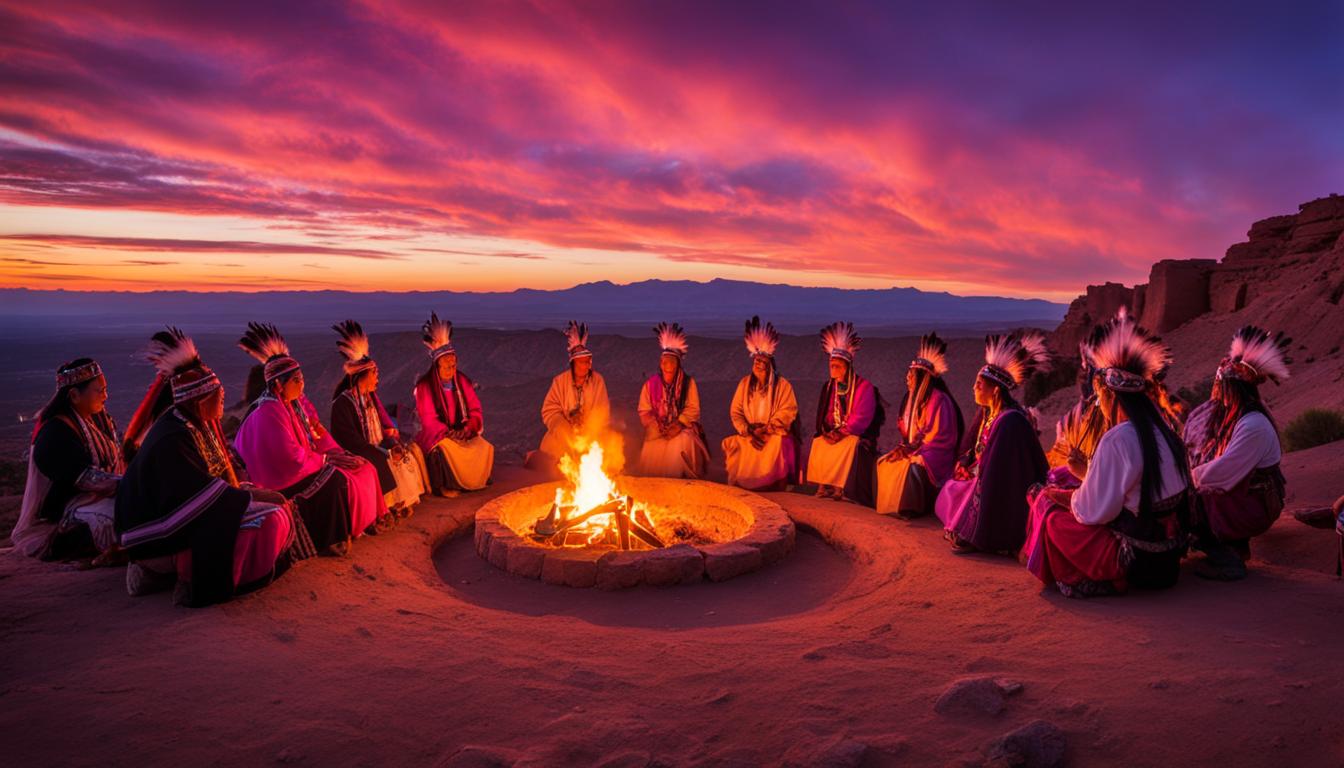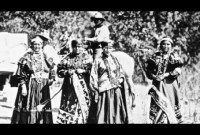
Guardians of Sacred Ground: The Hopi Tribe’s Enduring Struggle to Protect Ancestral Lands
In the stark, beautiful high desert of northeastern Arizona, where the red earth meets the vast, cerulean sky, lies the ancestral homeland of the Hopi people. For millennia, this resilient tribe has lived in harmony with the land, guided by prophecies and a profound spiritual connection to their sacred sites. These aren’t just geographical markers; they are living testaments to their history, religion, and identity – places where ceremonies are performed, ancestors rest, and the very essence of Hopi life is sustained. Yet, this ancient connection is under relentless assault from modern development, resource extraction, and a fundamental misunderstanding of what "sacred" truly means.
The struggle of the Hopi Tribe to protect their sacred sites is a microcosm of the broader battle faced by Indigenous peoples worldwide: the fight to preserve cultural heritage, sovereignty, and the delicate balance of the natural world against encroaching industrial and commercial interests. It is a story of deep spiritual reverence colliding with legal complexities, economic pressures, and a prevailing Western worldview that often prioritizes profit over prayer.

The Essence of Hopi Sacredness: A Living Landscape
To understand the urgency of the Hopi’s fight, one must first grasp their unique concept of sacredness. For the Hopi, the entire landscape of their ancestral lands, stretching far beyond the boundaries of their current reservation, is imbued with spiritual significance. Every mesa, spring, rock formation, and ancient ruin tells a story, holds a prophecy, or serves as a ceremonial ground.
"Our land is not just dirt and rocks; it is our mother, our history, our religion," explains a Hopi elder, whose words echo the sentiments of generations. "The places where our ancestors lived, where our kachinas reside, where our ceremonies have been performed since time immemorial – these are not merely sites. They are integral to who we are, to our very survival as a people."
The Hopi believe they were placed on this land by Maasaw, the caretaker of the Earth, with a specific covenant: to live righteously, care for the land, and maintain the balance of the universe through their prayers and ceremonies. This duty extends to the protection of places like the San Francisco Peaks, a towering mountain range visible from their mesas, revered as the dwelling place of the Kachina spirits who bring rain and blessings. Other critical sites include the Grand Canyon, considered a place of emergence; Black Mesa, a vital source of water and traditional resources; and numerous ancient villages (wupatki) and pilgrimage routes that crisscross the vast Arizona landscape.
These sites are not static; they are part of a living, interconnected system. Disturbing one part, the Hopi believe, can have ripple effects, not just on their culture but on the entire ecological balance.
The Assault on Sacred Ground: Black Mesa and Beyond
One of the most protracted and devastating battles for the Hopi has centered on Black Mesa, a massive plateau rich in coal deposits. For decades, Peabody Energy, one of the world’s largest private coal companies, operated large-scale strip mines on Black Mesa, extracting coal that was transported via a slurry pipeline. This process consumed vast quantities of pristine groundwater from the N-aquifer, the sole source of potable water for the Hopi and Navajo communities.
The environmental impact was dire: springs dried up, water tables dropped, and the delicate desert ecosystem suffered. But for the Hopi, the spiritual damage was equally, if not more, profound. Black Mesa is not just a resource; it is a sacred area where ancestors are buried, ceremonies are held, and medicinal plants are gathered. The desecration of this land was seen as a direct assault on their spiritual well-being and their covenant with Maasaw.

"When they dig up our land, they are digging up our ancestors, our prayers, our future," stated Vernon Masayesva, a former Hopi Tribal Chairman and a vocal advocate for water rights, in numerous interviews. "The water from the aquifer is our lifeblood. Without it, our corn cannot grow, our ceremonies cannot be performed, and our way of life will perish."
While the coal mines on Black Mesa ceased operations in 2005 and the Mohave Generating Station closed, the legacy of environmental damage and the fight for water remediation continue. The Black Mesa case remains a potent symbol of the immense power imbalance Indigenous communities face when confronting corporate giants and the complex legal frameworks that often favor extraction over preservation.
The threats, however, extend far beyond coal mining. The San Francisco Peaks, revered by the Hopi and 12 other tribes as sacred, has been the site of an ongoing legal battle over the use of treated wastewater for snowmaking at the Arizona Snowbowl ski resort. Despite the spiritual significance of the peaks as the home of Kachina spirits and a source of traditional medicines, courts have largely sided with the ski resort, citing economic interests and existing land-use permits. The use of treated wastewater is particularly offensive to the tribes, as it involves a substance considered impure being spread upon a sacred site.
Even the iconic Grand Canyon, a place of immense spiritual importance to the Hopi as their place of emergence from the underworld, faces threats from overtourism, proposed developments, and commercial helicopter overflights that disturb the spiritual quietude of the canyon. Ancient petroglyphs and ancestral sites within the canyon are vulnerable to vandalism and neglect.
Legal Battles and Cultural Resistance
The Hopi Tribe has not been passive in the face of these threats. They have employed every available legal and political tool, often in collaboration with environmental groups and other Native American tribes. They have filed lawsuits, lobbied Congress, and engaged in public awareness campaigns to highlight the plight of their sacred lands.
Federal laws like the National Historic Preservation Act (NHPA) and the American Indian Religious Freedom Act (AIRFA) are meant to protect such sites, but their enforcement is often weak, and they frequently fail to provide the comprehensive protection Indigenous communities seek. AIRFA, for instance, has been interpreted by courts as protecting religious practices but not necessarily the places where those practices occur, creating a significant loophole. The Native American Graves Protection and Repatriation Act (NAGPRA) has been more effective in repatriating ancestral remains and funerary objects, but it doesn’t fully address the broader issue of landscape protection.
The Hopi Cultural Preservation Office (HCPO) plays a crucial role, working tirelessly to document sacred sites, educate the public, and advise the tribal government on cultural resource management. They often find themselves in the unenviable position of having to reveal sensitive cultural information in court to prove the significance of a site, a process that itself can be seen as a form of desecration.
"It’s a constant tightrope walk," says a representative from the HCPO. "We must share enough to demonstrate the profound sacredness of a place, but not so much that we expose our deepest spiritual beliefs to potential misuse or misunderstanding. The very act of explaining our spirituality in a Western legal framework is often a violation in itself."
Beyond legal challenges, the Hopi maintain their cultural resistance through traditional ceremonies, storytelling, and education. They teach their youth the importance of their sacred sites, ensuring that the knowledge and reverence are passed down through generations. They organize peaceful protests and pilgrimages to threatened areas, asserting their spiritual presence and connection to the land.
The Broader Implications: A Call for Respect
The struggle of the Hopi Tribe to protect their sacred sites extends far beyond the boundaries of their reservation. It is a vital chapter in the global narrative of Indigenous rights, environmental justice, and the preservation of cultural diversity. The Hopi’s fight underscores several critical lessons:
- The Interconnectedness of Culture and Land: For many Indigenous cultures, land is not merely property but a living entity, intricately tied to identity, spirituality, and survival. Disregarding this connection leads to irreparable cultural and environmental damage.
- The Need for True Consultation: Existing legal frameworks often fall short of genuine "free, prior, and informed consent" from Indigenous communities regarding projects on or near their ancestral lands. Meaningful consultation must go beyond mere notification and truly respect tribal sovereignty and spiritual beliefs.
- Beyond Economic Value: The value of a place cannot always be quantified in economic terms. Spiritual, cultural, and ecological values often outweigh monetary gains, and legal systems must evolve to reflect this truth.
- A Shared Future: Protecting Indigenous sacred sites is not just about tribal rights; it’s about preserving the planet’s cultural and ecological heritage for all humanity. The traditional ecological knowledge held by Indigenous peoples, often tied to their sacred landscapes, offers invaluable insights into sustainable living and environmental stewardship.
As the sun continues its journey across the vast Arizona sky, casting long shadows over ancient mesas, the Hopi people remain steadfast. Their fight is not merely to win legal battles but to uphold a sacred covenant, to protect a way of life that has sustained them for millennia. Their resilience serves as a powerful reminder that while the land may bear the scars of exploitation, the spirit of its guardians, and the sacredness they defend, remains unbroken. Their enduring plea is simple yet profound: to respect the sacred, to honor the ancient, and to recognize that the health of the land is inextricably linked to the well-being of all its inhabitants.


